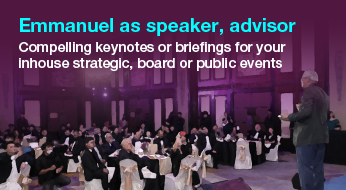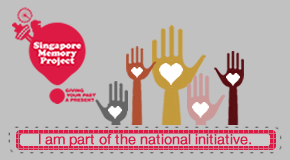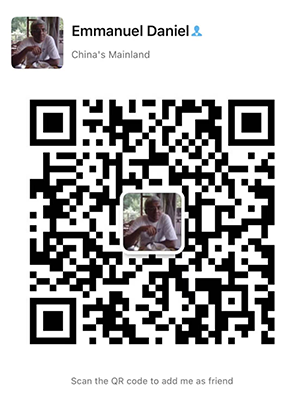The world of trade is probably the last bastion of paper processing and manual intervention. But Bolero is set to revolutionise that as it seeks to digitise global trade services. Bolero CEO Ian Kerr speaks to The Asian Banker.
Here is the transcript of the video
Bolero is a community of corporates, banks, insurers, and logistics service providers. It operates on a cloud-based platform to provide trade finance technology and global trade services such as financial trade instruments, electronic document presentation, and enriched document matching, through a cloud architecture called ePresentation. Unlike traditional point-to-point approaches, ePresentationprovides paperless, multi-party trade documentation solutions with no infrastructure costs. The Asian Banker’s Emmanuel Daniel sat down with Ian Kerr, chief executive officer of Bolero, during Sibos 2015 to discuss trade finance and the place of Bolero in the now-digitising documentary trade finance environment.
Emmanuel Daniel (ED): You are the chief executive officer of Bolero, an organisation with a history that goes back to 1998.How has Bolero changed and where is documentary trade finance today the way the banks understand trade finance? I am asking this question because I have this nagging suspicion that the corporate customers of banks think of trade very differently today.
Ian Kerr (IK): Indeed. Going back, Bolero does have a very long history. It was formed in 1998 as a joint venture between Swift and the CT Co of Maritime Insurers. When I took over as CEO in May 2014, I found the original feasibility study done by the Swift EDI Committee on connectivity platform for trade. It was all about bringing together sellers, buyers, their respective financial institutions, and other involved parties in trade together through a trusted connectivity platform. That’s where the idea of Bolero was born. In those days, a connectivity platform for trade was ahead of its time. The world just wasn’t quite ready.
The world of trade is probably the last bastion of paper processing and manual intervention, which needs to be conquered in terms of financial services. When the company was formed, e-commerce was still in the early stages. Then the Internet bubble burst. What happened in the intervening time is basically all of us became more comfortable with technology—from the way we conduct our personal lives, Internet shopping, e-commerce, everything with payments and other areas of financial services are all based now on how to join channels. So basically it is about trust, and the trust is now here for all parties involved.
ED: So what is Bolero today?
IK: Bolero is founded on that connectivity platform. We bring together buyers, sellers, and all the other involved parties in a hosted service platform. Our services are web-based and delivered either as a software, service, or via the Bolero Gateway, which enables integration directly into existing back office business systems and workflows.
ED: Historically you started as a bank membership-type organisation, and today you are saying that you are a platform providing corporate clients with the ability to connect with any bank they want to.
IK: Indeed. The pedigree of the company that started off in the early days and is still a very big part of our business is multibank trade finance. So basically for large corporations that are running credit lines all around the world, and which by necessity require access to multiple banks in different locations, we provide that assured connectivity platform. As an example, we have done a fantastic job with ABB in terms of integrating into their back office system. They are very, very clear on the management of their credit lines. We connect them to over 40 banks around the world in the posting of guarantees to support their salespersons.
ED: The thing I am curious about is how much of this is driven by the corporates, and how much of this is where the corporates are within an ecosystem that you have created. I am piecing it together because being a bank-owned consortium providing a multibank platform for corporates, that part of the equation is taken care of. The other part of the equation is for the corporates to decide what they want to do with that excess. So to what extent is Bolero corporate-driven today?
IK: It is all about the corporates, and I think a good example of that is where we have moved on from multibank trade financing, to the concept of ePresentation of trade documents. This has been particularly driven in recent years by some of our large-share-quantity organisations and people whom we have connected to Bolero at the moment, like BHP Billiton and Riotinto, which have had some pretty challenging times, especially with what has been happening in the commodity space. Iron ore was $170.00 a ton a couple of years ago and is now around $56.00.The latest number has caused some real consternation.
Bolero basically provides the platform where we manage not just the bill of lading as it is raised from the carrier and transferred to the seller; we also bring together all the supporting trade documents: the purchase orders, invoices, packing lists. Our job is to distribute those documents to the right party at the right time to complete the transaction.
ED: So it is automating what was traditionally trade documentary.
IK: It is automating a manual process, but the business case is actually a very significant one. Let’s take for example a trade settled through a letter of credit (LC). If you are going through the conventional manual processes and sending paper around the world through couriers, that could take 20–30 days. If we are talking about a consignment of iron ore selling from Port Hedland in West Australia to Shanghai in China, that takes 8–10 days, so there can be a discrepancy in terms of best arrival and completion of the paperwork. But if we can complete that paperwork in two days, then that means the transaction can be recognised earlier. Bolero connects all parties—seller, buyer, bank, carrier, all other involved parties—so that the transaction can be completed in a day or two.
ED: If you take the profile of an ABB, how much of its trade business is carried out through documented pre-credit, and what are new, evolving platforms it might be using? I’m sure ABB provides or engages in multiple platforms.
IK: ABB does indeed, absolutely. It is about having the right blend and the right solutions to the four various areas of its business.
ED: If it had its way, how do you think ABB would evolve if documentary credit is going to be an essential part of trade for a long time?
IK: ABB is into high-value capital goods for power generation and large-scale infrastructure projects. One of the things happening now and in the next year is a large increase in investment in infrastructure projects. Typically, these are complex multiyear situations, which need to be backed by bank performance guarantees. So before ABB can actually sell, it needs to put these bank guarantees in place.
That actually is a fundamental part of ABB’s business development, and having that global capability to manage such through the right local institutions or through global institutions as it needs to, is absolutely key to its business as well. At the same time, payment streams along open accounts that it also is engaged in are vital, and that is what we are delivering.
This is a very good example of what can be achieved through digitisation, particularly as we have strengthened ABB’s back office where there is no more manual intervention; everything is linked to their treasury system. So it is all about visibility, reporting, and very sharp management of credit lines.
ED: How does information flow through your networks? What are banks doing with that information, and what are you able to do? Are you just a broker of information, a central counter? Or do the services you perform add value to the information float?
IK: Yes and no. Bolero has a number of fundamental components. First of all, we are a daughter of Swift. We inherited that technical DNA around messaging and authentication. So we provide that assurance, that confidence in the transaction, which is good for the corporates, for the banks. We can work with a wide variety of different data streams and document types with structured data and unstructured data. We have a matching engine, which can help with matching and compliance. We have a title registry, which manages the work flows around the transition of titles as a transaction is completed.
Everybody that enrolls in Bolero signs a rule book. This is important because we authenticate people as they sign up. The rule book does not only govern their roles and responsibilities and how they interact with Bolero, but also contains the legal compliance of that transaction. As for the data, we use it for connectivity. It’s a bit like the postman who is not allowed to look into the envelope to read checks—we have to be careful with data. But we can provide information around transaction flows and messaging, which actually can be very useful.
ED: Do you do that right now?
IK: We do. We are developing a roadmap into the future, and looking at how we can capitalise on those core components of Bolero and repackage them into a way to map where the business is going.
ED: Does the Bolero model benefit the small bank without distribution networks of its own, more than it does the big banks with a wide distribution network?
IK: We have a wide variety of banks. We have had some of the world’s largest trade banks on our platform for many, many years.
ED: Are there multiple reasons to be on Bolero?
IK: Yes, there are: responding to customer requirements, being flexible, being able to manage the processing of these instructions electronically. More recently we have taken on some small banks. That is where you focus initially, the domestic business. India has also been a very big focus of our attention recently, where we see a lot of opportunity. We now have five Indian banks enrolled in Bolero.
So effectively, for issuers of LCs for importers, like what is happening in China, organisations that we have on boarded now take advantage of Bolero’s ePresentation capabilities. I would see that happening in the Indian market as well, and that is supported by the local banks.
ED: Where did Bolero lose its way? When I looked last at your user profile, you had a lot of Japanese shipping companies. Do you approve more the concept rather than the viability of the business?
IK: Yes. In terms of how Bolero lost its way, I think a number of things were not put together in terms of the right growth components, and that is one of the things I would be working very hard on to correct. First of all, if you are growing a digitised ecosystem, you have to have a proposition and a business case for a commercial model that makes sense to all parties. Otherwise, it is not going to be sustainable. There are no clear winners nor clear losers. There should be a balance between the commercial model and the business case, and I have been very obsessed about that. So we have been looking at the commercial model as well.
We also have to fix the issues around connectivity, to make it very easy to do business with us. For example, we integrate into the corporates environment: the ERP systems, the bank’s own back office system to remove some barriers that had proven to be a problem in the early days of Bolero. We also need to manage relationships as we are a service provider.
We know we need to work with banks particularly alongside their trade product and sales teams to position what Bolero can offer in terms of reach into their customer base, flexibility, and responsiveness to their customer needs. We are starting to see that happen: we are seeing banks actually introducing us to their corporate clients. Some banks are white-labeling the Bolero solution so they can reach into certain sectors of their corporate community. We work alongside them in terms of requests for proposals for trade business where we can be their selected connectivity solution.
ED: So is it right to say that as long as documentary credit has a role, as long as banks are listening to their corporates, Bolero will be relevant?
IK: Yes. But I think it’s not just about documentary credits, though that’s still a very important part of business. If you look at world trade of $20 trillion, the actual amount that’s actually settled through documentary credits has remained reasonably static at around about $3.5–$4trillion over the last few years. What we are doing in ePresentation is just as valid in an open account environment as it is in an LC-settled environment.
ED: How much of your documentary credits is ePresentation?
IK: It varies. Among the recent transactions we supported is for Cargo, which involved a grain transaction from Argentina to Malaysia and 50 electronic bills of lading, which were all done under open account.
In concluding the interview, Kerr admitted that there is lot of discussion about where LCs fit, where open accounts fit, or if there a role for bank payment obligations. Bolero is very supportive of these; for them, it is a natural extension of their ePresentation environment. Whether working with documents and understanding the data, or with bank payment obligations in terms of confirming receivables, confirming payables is a natural extension. Hence, for Kerr, the ecosystem is growing, and now is the time where the vision that was set in place back in the mid-1990s for a connectivity platform for trade is finally ready to be realised.







